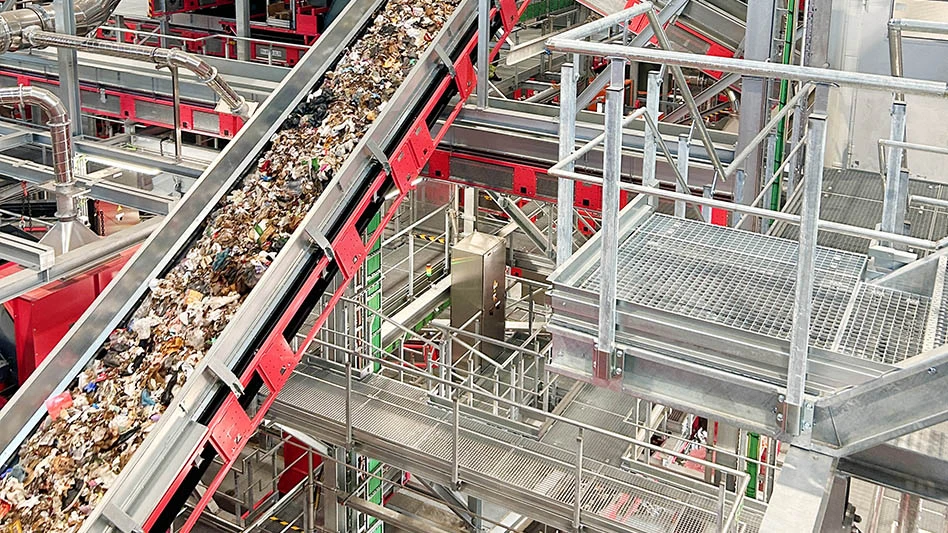‘Renewable Energy from Waste,’ GBB partner on webinar series
Renewable Energy from Waste (REW) magazine has for the second year in a row partnered with Gershman, Brickner & Bratton Inc. (GBB), to offer a series of webinars to help operators and project developers get the most value out of existing and proposed anaerobic digestion (AD) facilities.
The REW Summer School Series: Anaerobic Digestion will provide key insights into how to make this technology profitable from the organic material introduced to the system to the final gas and digestate products produced.

Webinars offer the ability to view presentations from the convenience of the office as speakers share how AD can create added value for operations and how to maximize the effectiveness of the technology. Webinar topics and dates are as follows:
- Opportunities in Codigestion of Multiple Organic Streams, June 16, from 1 to 2 p.m. E.T.—This webinar examines what plant and materials preparation modifications need to be made in order to codigest multiple waste types and achieve optimal plant performance.
- Finding Revenue Sources for Biogas, July 14, from from 1 to 2 p.m. E.T.—This webinar will explore the end markets available for biogas and how to determine the best outlet for the energy based on the needs of the plant, including economic and legislative factors.
- Maximizing the Value of Digestate as an End Product, Aug. 18, from 1 to 2 p.m. E.T.—This session will provide advice on developing a nutrient-rich material without compromising the energy output level of the digester. Potential customers for these end products also will be discussed.
Attendees can sign up for individual webinars or can receive a discount when they sign up for all three. More information is available at http://rewsummerschool.rewmag.com.
Stop & Shop converts inedible food into energy
The Stop & Shop Supermarket Co. LLC, Quincy, Massachusetts, celebrated the opening of its Green Energy Facility in Freetown, Massachusetts, on April 15.
The facility will convert inedible food from the company’s Stop & Shop New England stores into energy that will help power the company’s distribution center in Freetown.
The Stop & Shop Green Energy Facility is expected to process an average of 95 tons of inedible food per day via anaerobic digestion (AD), an estimated 34,000 tons per year.
As the food breaks down, it produces gas that fuels a generator that, in turn, generates electricity. The energy produced by the 12,000-square-foot facility will provide up to 40 percent of the 1.1 million square-foot Freetown distribution center’s energy needs, enough power to operate the facility for four months out of the year.

Once fully operational, the facility will create approximately 1.25 megawatts of clean electricity.
“As a responsible retailer, one of our top priorities is reducing our environmental footprint, specifically through the conversion of food that would otherwise go into a landfill,” says Mark McGowan, president, Stop & Shop New England division.
The Green Energy Facility was created and is operated by Divert Inc., a Massachusetts-based technology company focused on creating a waste-free retail industry.
A $400,000 grant was provided by the Massachusetts Clean Energy Center for the creation of the facility. Inedible food products from all of Stop & Shop New England’s 212 stores that cannot be sold or donated to regional food banks or local farms is transported to the Green Energy Facility.
Then, by recreating the naturally-occurring process of anaerobic digestion, carbon in the organic material is converted into a biogas and used as a power source. The process is carried out in a contained, oxygen-free area, which does not produce any odors.
Latest from Waste Today
- US Senate backs reduced cuts to EPA
- ELV Select Equipment, Reworld aid NYPD in secure firearm disposal
- Waste Connections announces Q2 results
- Returnity and Cosmoprof to address reusable bag waste
- SWANA releases report on aging WTE facilities
- New economic assessment reveals cost benefits of California’s SB 54
- Premier Truck Sales & Rental opens new facility
- TeknTrash Robotics, Sharp Group partner on humanoid robot pilot





